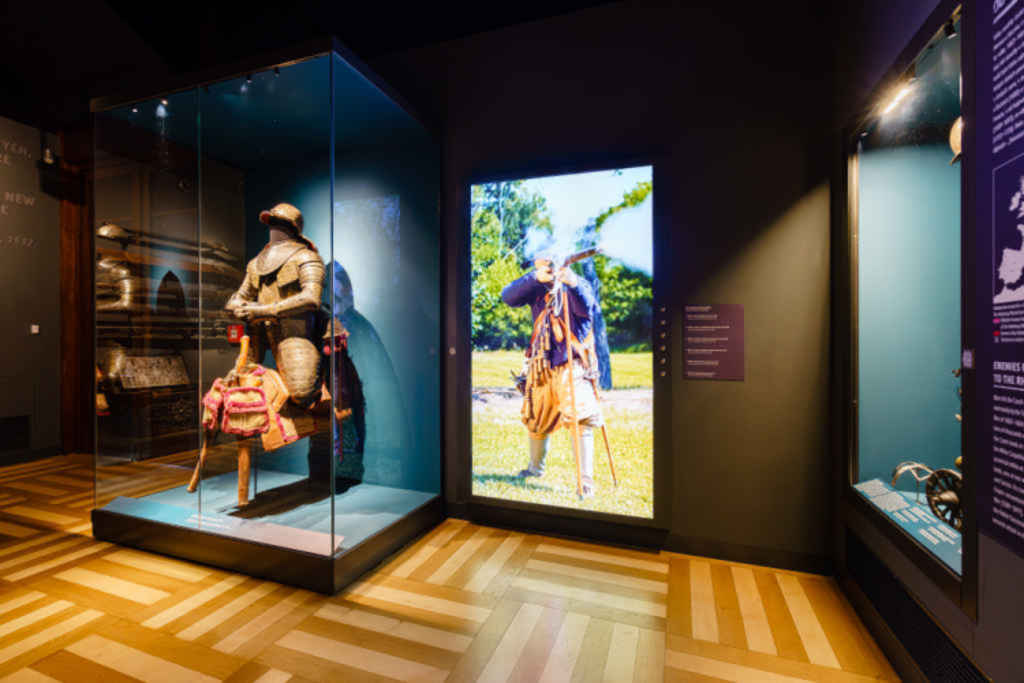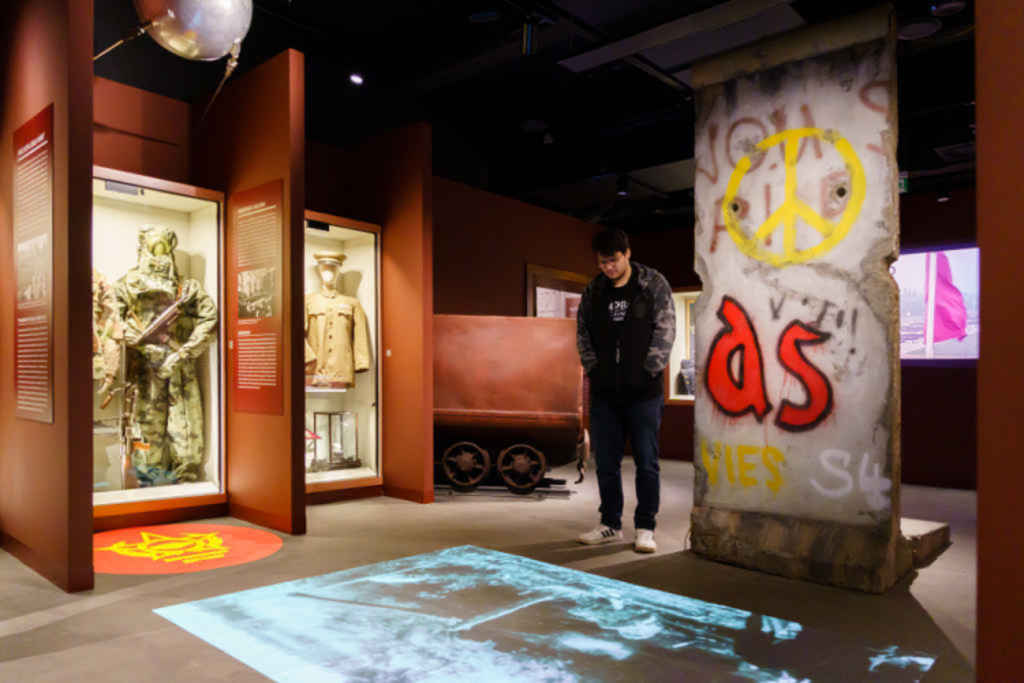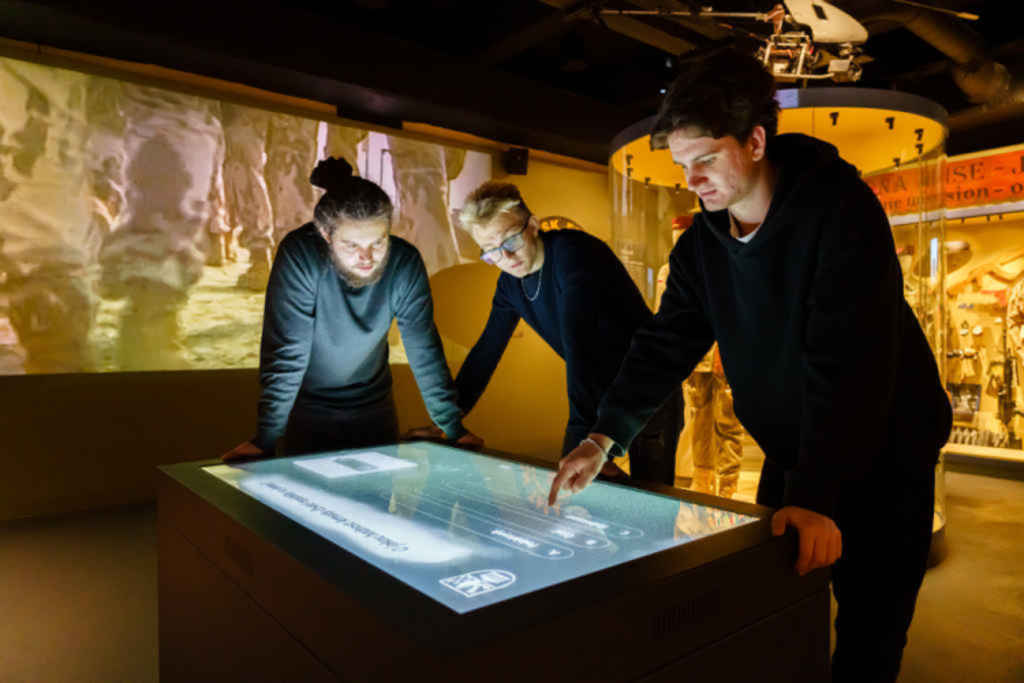Storytelling is key for museums, with AV Media delivering a revolutionary narrative that is ready for duty. Reece Webb reports.
History is all about narrative, weaving a story through the ages to tell the story of bygone people, events and challenges that defined generations and historical eras alike. The modern-day Czech Republic has always stood at the crossroads between east and west with a rich, if tumultuous history behind it.
Standing firmly between these two worlds, the region has experienced generations of conflict: From the tumultuous centuries as Bohemia under the Holy Roman Empire, to the brutal Nazi occupation and subsequent uprisings in 1945, all the way up to the communist occupation of Czechoslovakia and Soviet-led invasion of the 1960s, up to a bright future as the independent Czech Republic.
The modern-day Czech Republic’s borders and identity were clearly defined by its military history, making the Military History Institute of Prague a key location for understanding the Czech people’s long and vibrant past.
The Military History Institute Prague is owned and operated by the Czech Military, undergoing a massive renovation of its 5,000 sq. m. premises to offer new, immersive experiences for its visitors.
To this end, integrator AV Media was brought on board, not just to install a fully functional and interactive AV system, but to work hand-in-hand with the client to design an experience that will educate, immerse and entertain visitors time and time again with an exciting, new approach.
Viktor Plass, senior sales consultant, AV Media, comments: “We have a very strong cultural segment in AV Media, and we are not just focused on AV design, but can also prepare exhibition designs from scratch. This approach helps us in the museum space.
“This project started in 2016 when we were contacted by architects who were struggling with the concept. There is often quite a conservative approach [with museums] which is not focused on visitors, and the architects needed help from a company that is familiar with both AV and the design/content [of a project].”

AV Media faced a war on two fronts: Convincing the client to deliver a content-driven, story-led experience for visitors, using AV to tell the story. Additionally, the architects were unclear on the capabilities of AV, requiring AV Media to educate both the architect and the client while coming up with an AV design that would tell the story of Czech military history through the ages.
The integrator was involved from the very beginning of the project, which would see a rebuild of the museum with new exhibitions, exploring military history in a brand-new way. This was no small task: With over 7,500 exhibits from the 13th century to the modern day, centred around a multimedia interactive exhibition that combines collectors’ items, documents, photographs and short films presented with the help of modern audio-visual technologies.
The museum spans across four floors and is divided into five unique sections from the prehistoric era to the modern day, with the first propelling visitors 30,000 years into the past, leading them on a journey up to 1740 and beyond. The audiovisual design of the exhibition is designed to enhance the visitor experience through interactive exhibits, such as demonstrating the analysis of John of Luxembourg’s fatal wounds from battles or the depictions of battle scenes from the Czech film, ‘Against Everyone’, to visualise and contextualise the exhibits in front of visitors.
Throughout the venue, ELO touchscreens bring these interactive elements to life, using ELO touchscreen monitors and Brightsign digital signage players. Plass explains: “We are trying to avoid the use of computers, so we used Brightsign players. They are the best technology for us because it’s a 24/7 certified system. There’s no moving parts and an incredibly low fail rate, which was perfect for us. The touchscreens are used for quizzes, puzzles and interactive games that are connected to specific parts of the exhibition. These are great for the kids.
“Gamification is also very important, people can use their own devices to follow the storyline of the museum [through QR codes], which is great for the kids, as there is ‘edutainment’ content which is specifically designed for the ages of six and nine.”
Projection mapping also plays a key role within the museum space, used to enhance the physical exhibits by breathing new life into these relics of the past.
Plass says: “Projection mapping is very important. We are trying to bring the [physical] cannons, machine guns and cannons to life using projection; we aren’t using the usual projection techniques. We’re using vertical, connected projections up 12 metre high with one metre in width, which are integrated as part of the design more so than typical projection setups. We are using lots of standard technologies but in unusual ways.”
AV Media used a mix of Panasonic, Epson EB-725W projectors and Optoma projectors. “Our process is to use the same devices and brands, but in this context, it was not possible”, explains Plass, “I personally love Panasonic projectors, but in a small area, I need small optical distances with ultra-short lenses, so we are using a mix of Panasonic and Optoma projectors. In the museum, we ordered the products during the pandemic, so we also used Epson projectors [due to product shortages].”
Connection with other technologies is important as well, such as the lighting. You can go through the database on the touchscreens, if you pick an object on the panel, it will be highlighted, and you can read interesting information about the object. These aren’t just standard touchscreens but are connected to other elements of the exhibition.”
Into the trenches
Diving into the history of the first world war, this exhibit introduces visitors not only to the general history of the first world war, but also the journey from a vassal of the Austro-Hungarian Empire towards independent statehood as the Czechoslovak Republic.
As a war characterised by brutal trench warfare, communicating the daily struggles of soldiers in their struggle to survive and fight in the most abhorrent of conditions became a priority. To accomplish this, AV Media designed and created an immersive trench experience where visitors can endure the sights and sounds of life on the frontline, becoming part of the scene itself.
“This is an immersion area where you are physically entering the trenches, going through a battlefield dodging the bullets”, says Plass, “There are practical effects, like Pepper’s Ghost effects showing officers with their maps, as well as IOT sensors and tracking cameras that trigger huge explosions, smoke and lights. This is a very popular area!
“Visitors feel that the exhibition is communicating with them, and we designed the system like that. We are using lots of IOT and tracking cameras [throughout the exhibition] to count where visitors are, what they are doing and what interests them.”
This kind of exhibit stands out as a landmark for the client, who had never installed an immersive exhibit before. AV Media led the way by convincing the client and delivering an unforgettable experience for visitors.

Plass explains: “It was crazy for the client because this was an absolutely new approach and a fun discussion. These ‘old fashioned’ curators were quite shocked when we showed them the concept, but at the end, they were so excited by the idea that they wanted to include flies hovering over bodies and the smell of rotting meat, it’s amazing to see.”
On the audio side, AV Media specified a JBL Control series sound system throughout the museum, comprising 106 Control 25-1s and 247 Control 64P/T loudspeakers. These loudspeakers are distributed throughout the museum and its various exhibits, supported by 50 Panphonics AA-160 Basic amplifiers.
“Sound in the exhibition hall is a big topic”, explains Plass, “We are not just supporting the basic idea of dividing the areas, sometimes it’s more aboutlayers. We have areas where speech or storytelling needs to be in a precisely defined area, but there is ambient sound such as gunfire and aircraft in the sky, so the sound system was designed around layers, it’s all about the ‘random’ sounds [that makes it feel real].
“In some areas, it’s okay to have audio spilling out, like in a real-world environment, as it’s not distracting. Our approach is that sound should be everywhere and it was a focal point with the client as this was a brand-new approach to them, using sound for other purposes than just a general effect.”
Command and control Tying this elaborate system all together is a custom operating system, designed in house by AV-Media, using CUE control systems and AV-Media’s custom software to intelligently monitor the system.
Plass clarifies: “We are using our own operation system, V-PASS which we designed in-house 10 years ago; it’s a system that can analyse if there are any problems or if players get stuck, contacting the live person in the control room to undertake repairs. This was important for us as there are a huge number of products and we need to keep the system running for at least five years.

“The museum operating system offers a ‘service’ function where the client can change the text, quizzes, and databases on their own. If you can operate PowerPoint, then you can operate this system, it’s that easy. This was important for them as they need to regularly update digital descriptions and they can manage that all by themselves, it’s a real help for them.
“The client can also control what ‘mode’ the exhibition is in – there is a special event mode, general cleaning mode and standby mode for an ecofriendlier operating function.”
Today, the Military History Institute Prague is home to a brand-new audiovisual system that revolutionises the museum’s exhibits and brings both an educational and entertaining approach to the long and winding history of Czech statehood.
“I was concerned about keeping this system functional as the number of products that we installed is huge”, says Plass, “The client expects the system to run smoothly and there is critical infrastructure here, so everything needs to be finely tuned and working. There is a lot of IT infrastructure involved [as this is technically a military project delivered to a military standard] which we did not deliver, and this was a prestigious installation for us.
“This system is more secure than a bank and it was a challenge to use the client’s IT infrastructure to deliver packets securely over the system, but in the end, everything worked out well. There was also no time for running tests before the grand opening, but it all went smoothly, the client was convinced by what we were doing as we had a lot of great technicians and skilled programmers.”
Reflecting on the project, AV Media worked hand-in-hand with the Czech military and the museum curators to design and deliver a brand-new experience that is unlike anything that the Military History Institute has offered before.
Brigadier General Aleš Knížek, director, Military History Institute Prague, says: “Combining the reconstruction of the building with the creation of new permanent exhibitions into one project has proven to be a good move. We were able to create all the exhibitions, which consist of three hundred showcases featuring more than 7,000 exhibits, within eight months of taking over the reconstructed building. This is very unique on a pan-European scale. My thanks goes out to all my colleagues who spent thousands of hours working on the preparations. I would like the museum to become an inspiration for the entire Czech museum industry.”

Plass closes: “I am proud that we convinced the client to deliver the project in the way that we delivered it. We stuck to our guns, explained that we should deliver the project in the way that it panned out, moving away from an old-school, classical [museum] concept, and in the end, we succeeded.
“In the end, the client was very grateful that they were convinced and very proud of what we delivered together. They never fail to mention our company when talking about this delivery, and this is something that I am very proud of.”
Kit list
Brightsign HD224 digital signage players
CUE control systems
ELO 1002, 2294, ELO3243L touchscreen monitors
Epson EB-725W projectors
HP EliteDisplay E190i LCD displays
JBL Control 325-1 loudspeakers, Control 64P/T pendant loudspeakers
Optoma projectors
Panasonic projectors
Panphonics AA-160 basic amplifier